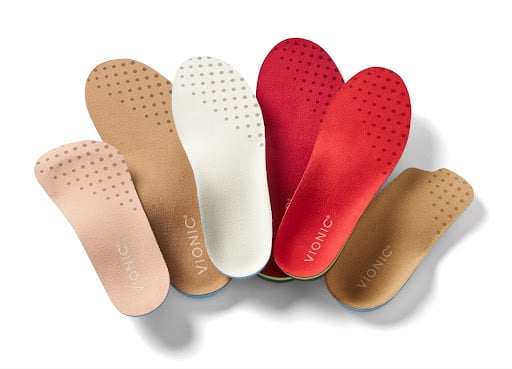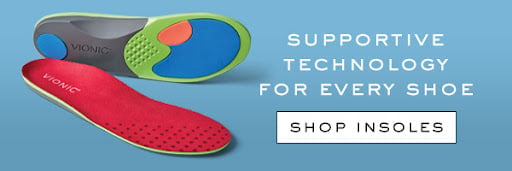If you had to guess, what would you say your shoes are made of? There are the obvious components that you can figure out just by looking at the shoe—the laces, the rubber or foam that makes up the sole, the leather or canvas of the shoe’s upper body, and even the metal or plastic of the laces’ aglets. But what about what’s inside the shoe?
It turns out that just like the old cliche, what’s inside is what matters most. Found sandwiched between the inner and outer layers of the shoe’s sole, the midsole is what gives shoes the support and cushioning your feet need to keep moving and grooving. But exactly what are midsoles, and how can you find the right type for your foot’s unique needs?
In this article, we’re diving deep into the middle layer of the shoe so that you can understand how midsoles work and the best type of midsole for you.
Why Do Shoes Have Midsoles?
To understand how midsoles function as part of a shoe, we’ll need to take a step back and look at the shoe as a whole and familiarize ourselves with shoe terminology.
Whether it’s a Chelsea boot, a summery sandal, a streamlined running shoe, travel walking shoes, or a classic loafer, all shoes are made of the same basic components:
- They all have some kind of vamp or upper portion that keeps the shoe on your foot and covers the foot to some extent—think the straps of a sandal or the tongue of a sneaker.
- They likely have some sort of structure at the heel or the ankle to provide additional support to your foot and either give you a little extra lift with a boost in the heel or a little extra shoe security with a strap around the ankle.
- They all have a sole, the bottom layer of the shoe commonly made of leather, rubber, or synthetic ingredients like PVC (polyvinyl chloride) or EVA (ethylene vinyl acetate).1
However, if a shoe has been designed for comfort and activity, it’s fairly common for it to have a midsole that’s nestled between:
- The outsole, which is the part of the shoe that rests directly against the ground.
- The insole is the layer of a shoe that is responsible for cushioning and providing separation between your foot and the outsole, as well as structure for your arches. If necessary, you can always boost this layer’s supportive capabilities by adding another insole, like the podiatrist-designed lightweight Unisex Relief 3QTR Insole.
In fact, midsoles are most commonly found in sneakers made for runners or athletes gearing up for high-intensity workouts.
Why is extra cushioning like the kind found in midsoles so important for athletic shoes?
No matter what kind of movement you’re into, anything more strenuous than lounging on the couch puts weight and strain on the foot. For gentle and simple everyday movements, like walking or standing, this pressure is usually unnoticeable, unless you have existing chronic foot pain, like plantar fasciitis (pain in the long tendon that runs along the sole of the foot, known as the plantar fascia).
However, this baseline level of ease can quickly go away when exercising without the appropriate footwear, especially when focusing on more intense high-impact movements like:
- Running
- Boxing
- HIIT routines
- Boot camp style workouts
Even if you don’t feel it right away, every time you run or jump, your body is subject to the full force of your weight on your feet. And this force can intensify when you’re performing these high-intensity motions, sometimes to the tune of ten times your body weight.2
So, whether you’re pounding the pavement every day doing high-impact exercise or your fitness routine is mostly focused on low-impact workouts like yoga, Pilates, swimming, or walking, you need to make sure you’re protecting your feet with shoes that can absorb the extra shocks that come with motion, like a shoe with a thoughtfully-designed midsole.
Which kind of midsole should you opt for?
The answer depends on your unique movement habits, body, and preferences. Let’s explore different types of midsoles and what they’re best suited for, below.
Foam Midsoles
You might not have heard of EVA before, but chances are it’s already in your closet. EVA, otherwise known as ethylene vinyl acetate, is a foam material that first became popular in the 1970s.3 It’s now become one of the most common materials used to add a little extra squish to your step. In fact, everything from your best running shoe to your favorite dress shoes might have EVA to thank for their ultra-comfy fit.
EVA is so common because it’s one of the best materials for shock absorption. Its squishy, bouncy texture means that it’s capable of absorbing a hefty amount of force, but at the same time, it holds its shape and offers significantly more long-term durability than more traditional midsole material like cork or rubber.
It’s fairly common to find running shoes that sport this spongy material as their shock-absorbing midsole. It strikes the right balance between providing a decent amount of cushioning to protect the foot from high-impact blows while still being light and easy to move with. The lightness of an athletic shoe is especially important for sports like running, where every little bit of extra weight can slow you down and tire you out quicker.
Shoes with EVA midsoles are a perfect pick for someone looking for a balanced, bouncy athletic sneaker that’ll keep them supported through a range of athletic activities. Here are a few of our EVA faves:
- The Vionic Walker Classic Sneaker, which features a removable molded EVA midsole with a half-inch elevation for a smooth transition in the heel-to-toe strike zone.
- The Fearless Sneaker, which offers an EVA midsole specially designed for weight distribution and balance.
Gel Midsoles
While a purely foam midsole is a great well-rounded option for most, you might be looking for a little more structure in your shoe. This may especially be the case if you have any chronic foot problems that can cause weakness or wobbliness, such as:
- Plantar fasciitis
- Overly high arches or flat feet
- Overpronation (rolling the foot inward while walking)
- Oversupination (rolling the foot outward while walking)
- Improper or incomplete healing from a previous injury, like a sprained or broken ankle or toe
Not only can these issues cause chronic aches throughout the foot and lower body that make exercise a pain, but they can also lead to a higher risk of more acute injuries. If your foot feels weakened or improperly supported, your chances of breaking an ankle or suffering a fall become significantly higher.
Take control of your stride by adding a layer of gel to your midsole. Made from silicone, gel pockets or insoles can provide significant support and stability to a shoe by offering an extra layer of comfort and structure.4 Because gel lightens the pressure on the shoe overall, it also can help the shoe last longer and keeps a foam midsole in excellent condition.
If the gel is built into the shoe, it’s most commonly found near the heel for an extra boost right where much of our weight tends to be distributed. Gel can also come in the form of a removable insole—perfect for when you’d like to alternate between structured support and bouncy lightness.
Air Midsoles
If you’re a runner, especially if you’re focused on speed and sprints, you know just how much a too-heavy shoe can drag you down at the worst possible times. While cushioning is great, sometimes, it can be just one extra element adding weight and bulk to the bottom of your foot.
If you’re searching for something that’s literally light as air, you’ll love midsoles made with air technology. Air-infused shoes don’t offer as much in terms of structure when compared with gel midsoles, but you’ll love them for the bounce, cloud-like support, and barely-there feel that will help you cross the finish line even faster.
These types of midsoles are crafted by creating miniature air pockets inside the shoe that provide cushion and bounce when stepped on, but quickly reinflate once released. Pair air midsoles with foot-hugging memory foam and you can treat your feet to ultra-lightweight footwear that’ll have you feel like you’re floating.
Get Moving With Vionic
For a part of the shoe that’s typically hidden away, the midsole can have a significant impact on your foot’s health and comfort, as well as your athletic performance. So, whether you’re a foam devotee or all about the air, it’s important to select a midsole that strikes the perfect balance between cushioning, support, and weight distribution based on your lifestyle and preferences.
Fortunately, if you shop Vionic, you can’t go wrong.
At Vionic, we’re devoted to creating shoes that feel just as good as they look. It’s no wonder so many of our products are trusted by the American Podiatric Medical Association—our exclusive alignment technology keeps the entire body balanced and ensures you’re always putting your best foot first. Explore our collection today of footwear expertly designed for performance.
Sources:
- “PVC – Polyvinyl Chloride.” Find Sourcing. https://www.findsourcing.com/articles/components/pvc—polyvinyl-chloride
- Wingenfeld, Sascha. “5 Common Causes for Foot Pain From Exercise.” Runtastic. 12 January, 2022. https://www.runtastic.com/blog/en/your-foot-hurts-heres-why-and-how-to-fix-it/
- “What Is EVA Foam and Why Is It Being Put In Boots?” Stridewise. https://stridewise.com/what-is-eva-foam/#What_is_EVA
- “What Do Runners Need to Know About Midsoles?” Geeks on Feet. 4 December, 2021. https://geeksonfeet.com/blog/midsole/



Leave a Reply